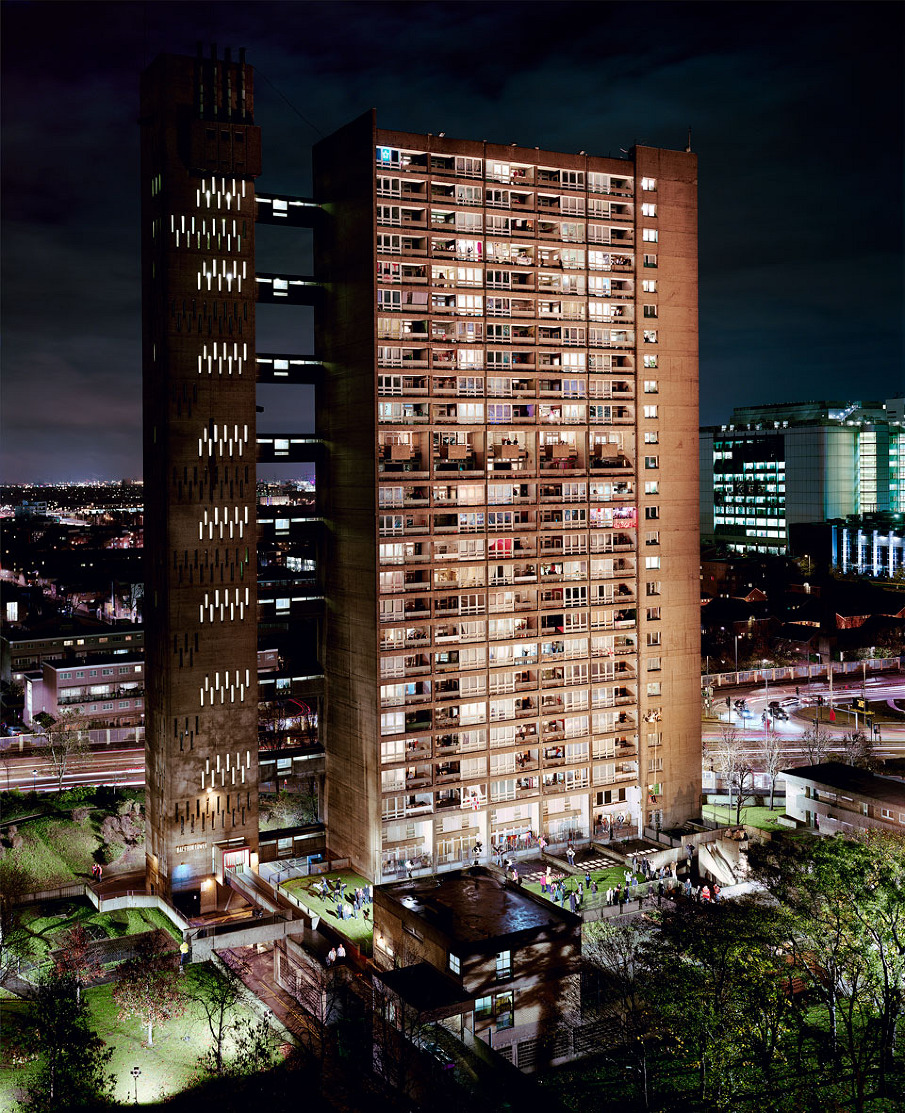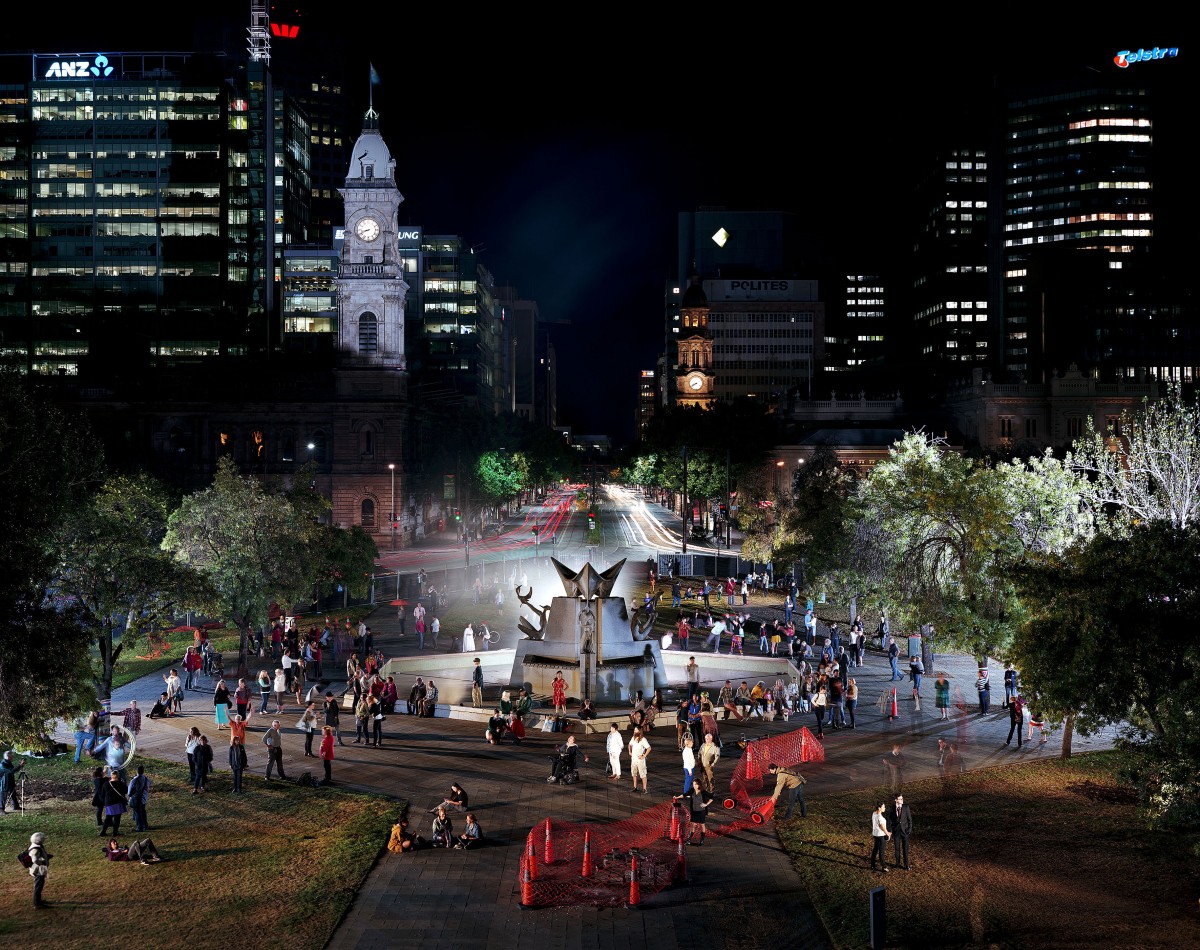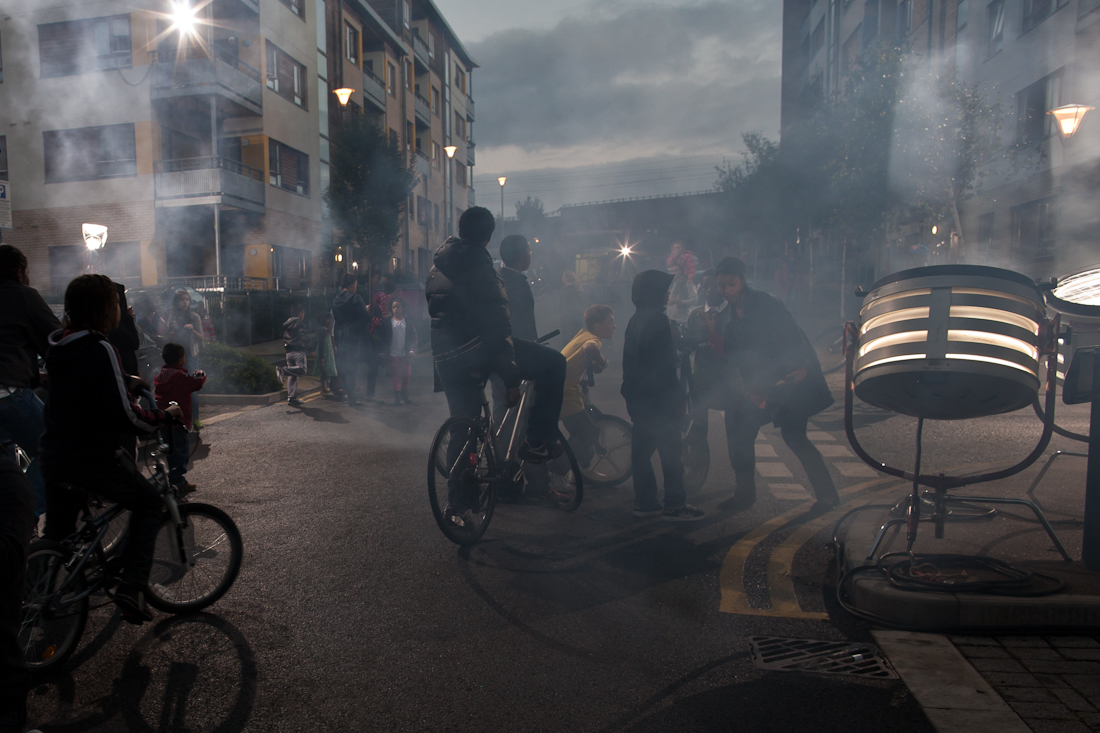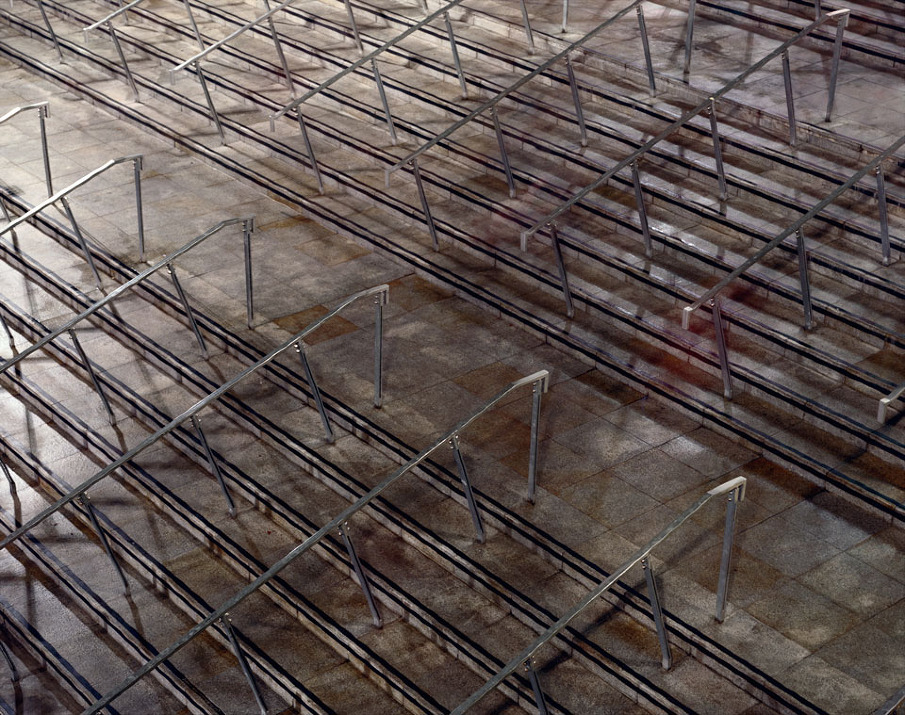I am always relieved that people do actually turn up on the day and take part; an anxiety like waiting for your guests to arrive at a party. You never really know.
Using the word community is difficult. I am not sure what it really means or if they categorically exist. While community can designate those who are a part of something, it can also all too easily describe the equal and opposite: those who are excluded, unwelcome, and not-a-part-of-that-something. The dark side of community.
My work follows an interest in the figure of the crowd, where a crowd is an open, fleeting and promiscuous state of together-ness. A crowd has no ultimate shape. It is always unstable, either growing or dissipating. A crowd is potential form.
Each of the Crowd Theory projects starts by drawing on peoples’ association to place. They begin by making an invitation to anyone and everyone who has an association with that place. From there an idea of a crowd portrait emerges.
Inadvertently, a number of recent projects have been made in places on the cusp of social change. The Balfron Project happened at the time of the announcement of the ‘decanting’ of its social housing tenants before refurbishment and a controversial privatisation of Goldfinger’s tower in the East End of London; Bow Cross was in a nearby location but at the other end of a regeneration process, where new flats were being let to a mix of past and new social housing tenants, people with long standing connections alongside complete strangers. In Crowd Theory Adelaide: Victoria Square/Tarntanyangga, a park that is the geographical and symbolic center of the city had just been closed off and was surrounded by construction site fencing.
Along with these pictures are the Erased Crowds series. These images are made through multiple exposures onto a single negative. I think of it as an attempt to bruise the film with the residue of a passing event. The process erases all detail of body and character leaving only a trace of human presence; a ‘corner of the eye moment’ reflected on the surrounding architecture.
The works are all in some way about public space and how we go about inhabiting these places, whether as part of a crowd, a confrontation between stranger-hood and sociability or an idea of public-ness. To set up a shoot takes a collective effort in coordinating scaffolding, film-lighting, soundtracks, camera, catering, administration and sometimes a smoke machine or closing off a busy street to traffic, as well as just being there. All of which is designed to hopefully enable an open response of people to place.
In the Crowd Theory works, it is entirely up to those in the frame to choose how they represent themselves within the overall scene. The only direction is technical, announcing the next shot and so on. I think it is about marking ones’ place, just being there. But there is always the inevitable question: which negative to single out as representative of the event? Somehow the rhythm of shot, pause, reload, shot, facilitates a transition from group to crowd, where the idea of an unconscious group mind emerges and the picture with any luck, falls into place – in both senses of the phrase.




